-
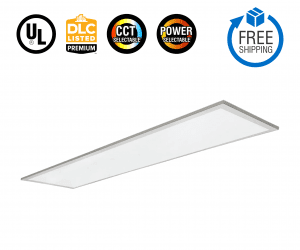 15-40W Selectable Edge-Lit Light Panel CRI 83 (1′ x 4′)
15-40W Selectable Edge-Lit Light Panel CRI 83 (1′ x 4′) -
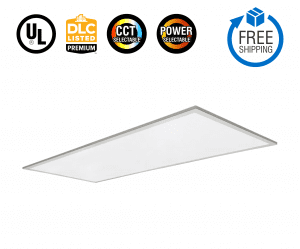 30-72W Selectable Edge-Lit Light Panel CRI 83 (2′ x 4′)
30-72W Selectable Edge-Lit Light Panel CRI 83 (2′ x 4′) -
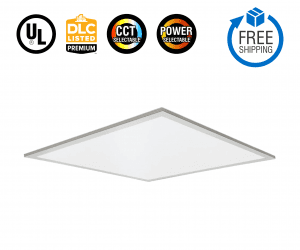 15-40W Selectable Edge-Lit Light Panel CRI 83 (2′ x 2′)
15-40W Selectable Edge-Lit Light Panel CRI 83 (2′ x 2′) -
 15W/20W/25W/30W/40W Tunable LED Panel Light, 2’x4′, 35/40/57/65K CCT, AC120-277V
15W/20W/25W/30W/40W Tunable LED Panel Light, 2’x4′, 35/40/57/65K CCT, AC120-277V -
 15W/20W/25W/30W/40W Tunable LED Panel Light, 1’x4′, 35/40/57/65K CCT, AC120-277V
15W/20W/25W/30W/40W Tunable LED Panel Light, 1’x4′, 35/40/57/65K CCT, AC120-277V -
 15W/20W/25W/30W/40W Tunable LED Panel Light, 2’x2′, 35/40/57/65K CCT, AC120-277V
15W/20W/25W/30W/40W Tunable LED Panel Light, 2’x2′, 35/40/57/65K CCT, AC120-277V -
 36W T8 8′ Single Pin LED Tube Clear Cover 5000K – CASE PACK (25 PCS)
36W T8 8′ Single Pin LED Tube Clear Cover 5000K – CASE PACK (25 PCS) -
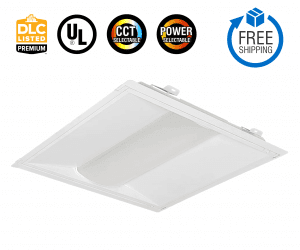 20-30W Selectable LED Troffer Retrofit Kit (2′ x 2′)
20-30W Selectable LED Troffer Retrofit Kit (2′ x 2′) -
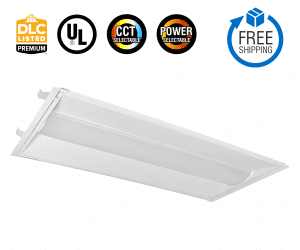 34-45W Selectable LED Troffer Retrofit Kit (2′ x 4′)
34-45W Selectable LED Troffer Retrofit Kit (2′ x 4′)
Healthcare Lighting Knowledge Base
LED lighting benefits healthcare facilities by improving patient and staff well-being through tunable, glare-free illumination, significantly reducing energy consumption and operational costs, and enhancing safety with better visibility and durability. The high-quality light provided by LEDs supports visual acuity for accurate diagnoses and treatments, while their ability to mimic natural light helps regulate circadian rhythms, promoting better sleep and mood for patients.
For Patients
- Improves circadian rhythm: Tunable LED lighting can mimic the natural progression of daylight, shifting from bright, cool tones in the morning to warmer, dimmer tones in the evening. This helps regulate patients’ sleep-wake cycles, which can improve sleep quality, mood, and overall well-being, potentially shortening hospital stays.
- Creates a healing environment: Dynamic lighting can be adjusted to reduce patient anxiety and create a more soothing atmosphere in waiting areas, lobbies, and recovery rooms.
- Enhances comfort and control: In patient rooms, personal lighting controls can empower patients to adjust illumination to their needs, increasing their sense of autonomy and comfort. Glare-free LED panels also reduce eye strain and discomfort.
- Reduces delirium: Exposure to properly timed bright light can help synchronize the body clock, which may lessen confusion and delirium, especially for patients in critical care units
For the Facility
- Significant Energy Savings: LEDs use up to 70-90% less energy than traditional lighting, leading to substantial reductions in electricity bills.
- Lower Maintenance and Costs: With a significantly longer lifespan than fluorescent bulbs, LEDs require less frequent replacement, reducing maintenance labor and the costs associated with bulb purchases.
- Enhanced Safety: Brighter, more consistent light improves visibility, helping to reduce accidents and falls.
- Improved Hygiene: Some LED fixtures are designed with antimicrobial coatings to help prevent the spread of infections.
- Environmental Sustainability: By reducing energy consumption and lasting longer, LEDs contribute to a smaller carbon footprint for healthcare facilities.
Operational Benefits
- Cost Allocation: The substantial cost savings from energy and maintenance can be reallocated to critical areas such as patient care and facility upgrades.
- Operational Efficiency: Reliable, long-lasting LED lighting minimizes disruptions and ensures consistent illumination in work and patient areas, supporting 24/7 hospital operations.
- Positive Reputation: Modern, sustainable, and patient-centered lighting choices can enhance a healthcare facility’s reputation.
For Staff
- Enhances visual acuity: High-quality LED lighting with a high Color Rendering Index (CRI) provides excellent color accuracy. This is critical for medical professionals to perform tasks with precision, such as assessing skin tone during diagnosis or performing surgery.
- Reduces eye strain and fatigue: Flicker-free, consistent LED illumination minimizes eye strain and headaches, helping staff maintain alertness and focus during long shifts.
- Boosts productivity: By customizing the color temperature, LED lighting can create environments that support concentration and alertness for tasks at nurses’ stations and in administrative areas.
For Facility Management
- Reduces energy consumption: LEDs are significantly more energy-efficient than traditional lighting, using up to 80% less energy. For 24/7 operations, this leads to substantial savings on electricity bills.
- Lowers maintenance costs: With a lifespan of over 50,000 hours, LED lights last much longer than incandescent and fluorescent bulbs, which minimizes the labor and material costs associated with frequent replacements.
- Improves infection control: LEDs generate very little heat, which helps maintain cooler, more comfortable environments. Sealed fixtures and integrated UV-C lighting options can also aid in disinfection and compliance with hygiene standards.
- Offers smart system integration: LEDs can be integrated with networked controls, motion sensors, and daylight sensors. This allows facilities to program automatic dimming or shut-offs, further conserving energy and improving operational efficiency.
- Boosts safety and reliability: LEDs provide instant illumination without a warm-up period, and battery-backed options ensure that critical areas like operating rooms remain lit during power outages.
- Supports sustainability: LEDs are free of hazardous materials like mercury and are recyclable. The switch to LED lighting helps healthcare facilities reduce their carbon footprint and align with environmental regulations
